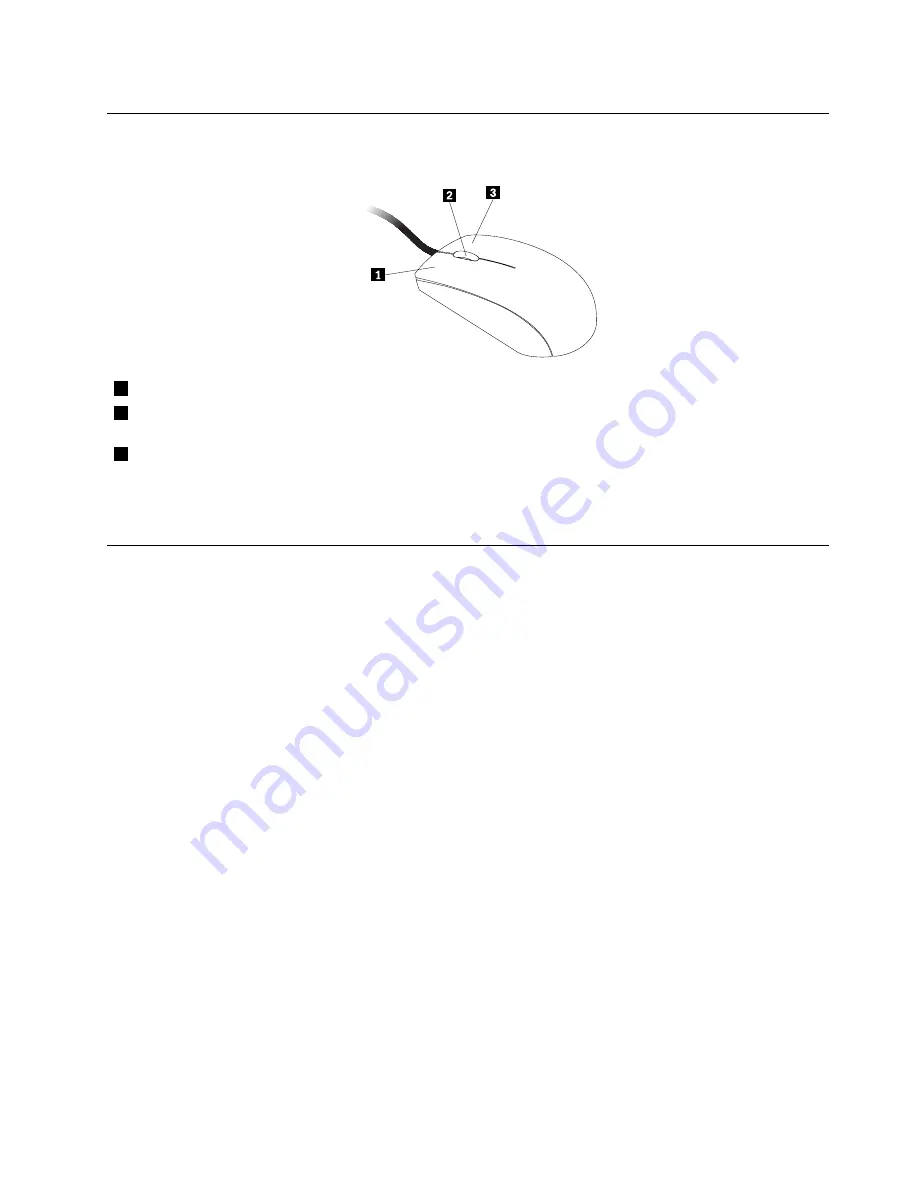
Using the wheel mouse
The wheel mouse has the following controls:
1
Primary mouse button
Use this button to select or start a program or menu item.
2
Wheel
Use the wheel to control the scrolling action of the mouse. The direction in which you
rotate the wheel controls the direction of the scrolling action.
3
Secondary mouse button
Use this button to display a menu for the active program, icon, or object.
You can switch the function of the primary and secondary mouse buttons and change other default behavior
through the mouse properties function in the Windows Control Panel.
Adjusting audio
Sound is an important part of the computer experience. Your computer has a digital audio controller built
into the system board. Some models also have a high-performance audio adapter installed in one of the PCI
card slots.
About your computer audio
If a factory-installed, high-performance audio adapter is installed in your computer, the system-board
audio connectors on the rear of the computer are typically disabled; use the connectors provided on the
audio adapter.
Each audio solution provides at least three audio connectors: audio line-in connector, audio line-out
connector, and Microphone connector. On some models, a fourth connector is provided for the attachment
of unpowered stereo speakers (speakers that do not require an ac power source). The audio adapter
provides you with the ability to record and play back sound and music, as well as to enjoy sound with
multimedia applications and work with speech-recognition software.
Optionally, you can connect a set of powered stereo speakers to the audio line-out connector to enjoy
better sound with multimedia applications.
Setting the volume from the desktop
The desktop volume control is accessible through the volume icon in the taskbar, which is located at the
bottom-right corner of the Windows desktop. Click the volume icon and move the slider up or down to
control the volume, or click the
Mute
icon to turn the audio off. If the volume icon is not in the taskbar, see
“Adding the volume icon to the taskbar” on page 17.
Adding the volume icon to the taskbar
To add the volume icon to the taskbar on the Windows 7 operating system, do the following:
Chapter 2
.
Using your computer
17
Summary of Contents for ThinkStation E32
Page 1: ...ThinkStation E32 User Guide Machine Types 30A2 and 30A3 ...
Page 6: ...iv ThinkStation E32 User Guide ...
Page 12: ...x ThinkStation E32 User Guide ...
Page 32: ...20 ThinkStation E32 User Guide ...
Page 114: ...102 ThinkStation E32 User Guide ...
Page 150: ...138 ThinkStation E32 User Guide ...
Page 152: ...140 ThinkStation E32 User Guide ...
Page 158: ...146 ThinkStation E32 User Guide ...
Page 162: ...150 ThinkStation E32 User Guide ...
Page 166: ...154 ThinkStation E32 User Guide ...
Page 170: ...158 ThinkStation E32 User Guide ...
Page 171: ......
Page 172: ......






























